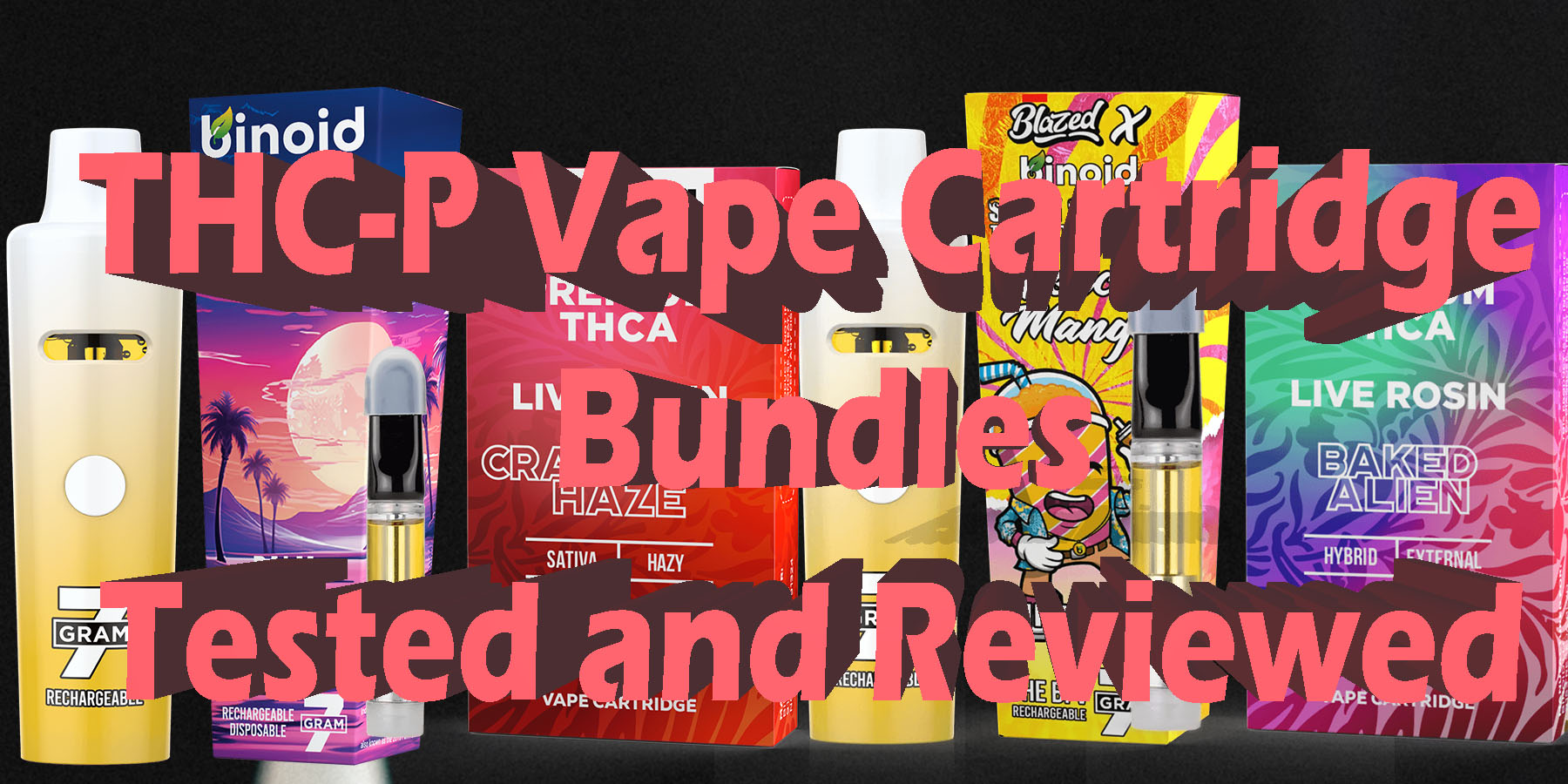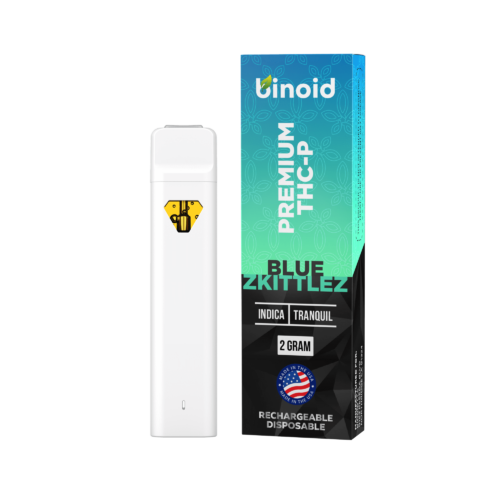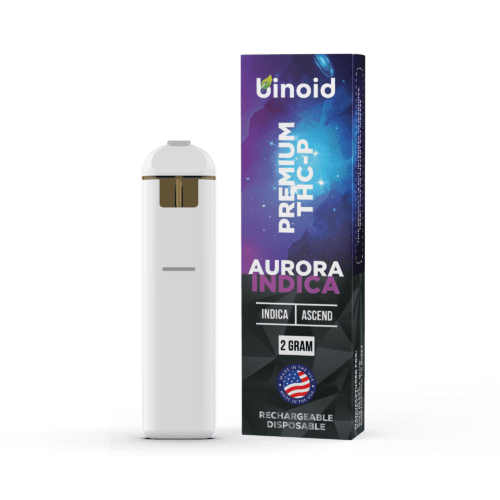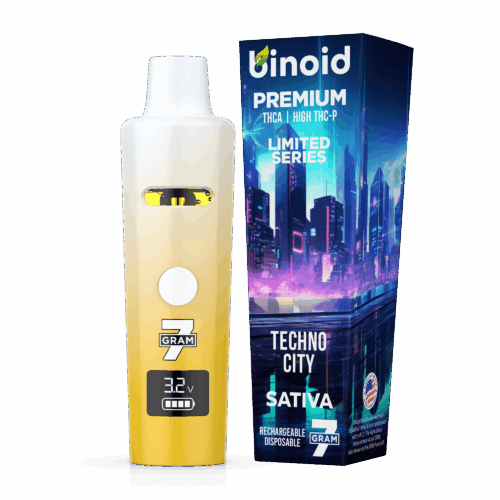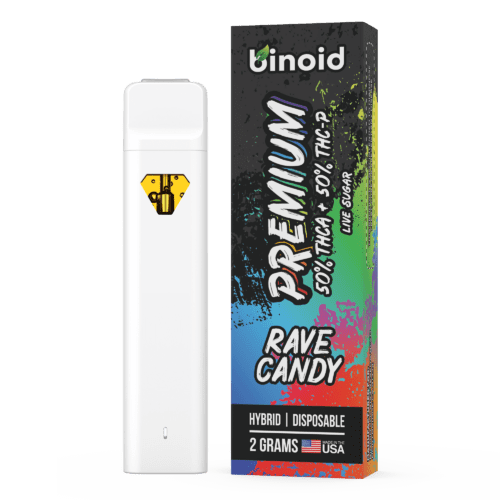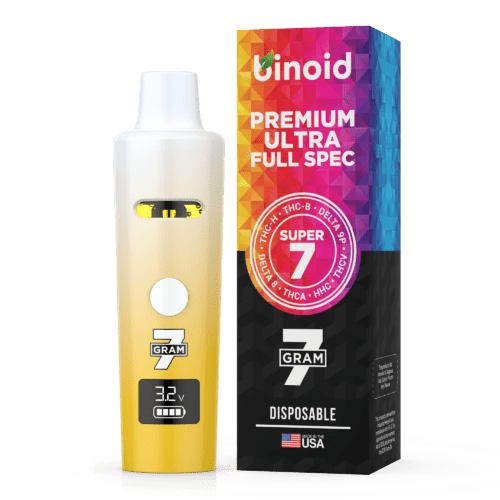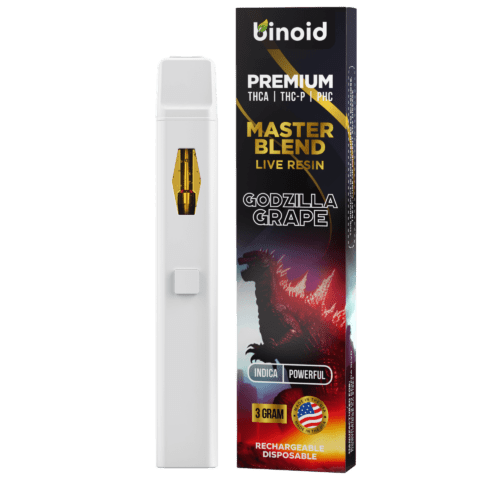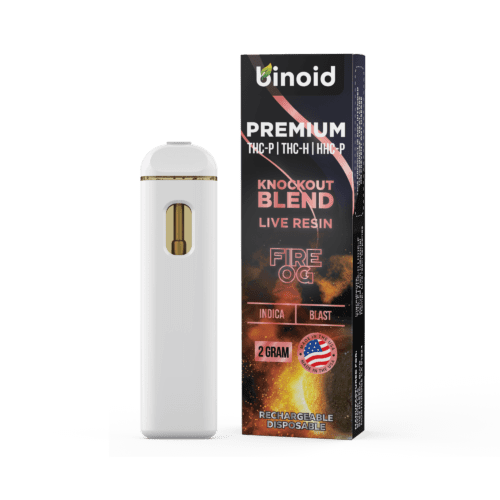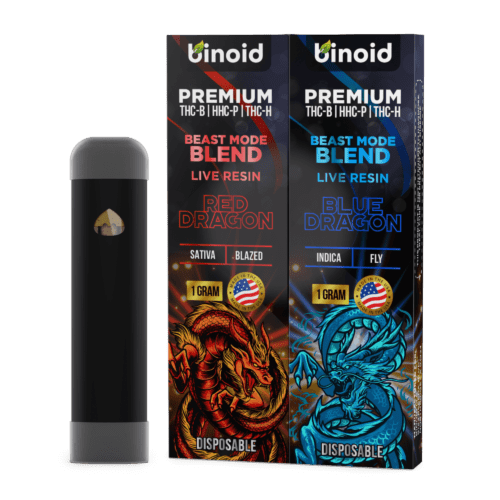Did you know that in the ever-shifting landscape of the cannabis universe, new discoveries occasionally emerge that’re considered to be immensely profound to the point of redefining the boundaries of what we thought was possible? For decades, THC has reigned supreme as the undisputed king of cannabinoids, the benchmark for potency and psychoactivity.
But as science delves deeper into the plant’s complex molecular makeup, it sometimes unearths a hidden giant, a compound that challenges the established hierarchy. That’s right folks, a new contender has entered the arena, one that takes the familiar effects of THC and amplifies them to an entirely new dimension. We’re talking about THC-P. This isn’t merely an alternative; it represents a significant leap forward in potency, a cannabinoid that demands respect and invites the most seasoned enthusiasts to explore a new frontier of euphoria and bliss.
To Buy THC-P Products Click Here
Recommended products
Your Key Insights into THC-P
Tetrahydrocannabiphorol (THC-P) stands as a relatively new and compelling discovery in the realm of cannabinoids. It’s an organic cannabinoid, a homolog of the well-known Delta-9 THC, but with a distinct and crucial difference in its molecular structure. This variance lies in its alkyl side chain; where Delta-9 THC possesses a five-carbon atom chain, THC-P boasts a seven-carbon atom chain. This seemingly minor alteration is believed to be the primary reason for its significantly different interaction with the body’s endocannabinoid system (ECS) – a complex cell-signaling system that plays a role in regulating a range of functions and processes, and the way cannabinoids bind to its receptors, particularly the CB1 receptor, is key to their effects. The elongated side chain of THC-P allows it to bind with much greater affinity to these receptors, a characteristic that underpins its unique and powerful profile.
The story of THC-P’s discovery is a recent one, marking a significant milestone in cannabis science. It was first identified and isolated in 2019 by a team of Italian researchers who were conducting advanced analysis on a specific strain of cannabis. Using cutting-edge mass spectrometry and liquid chromatography techniques, they were able to uncover this previously unknown compound. Their findings, published in the scientific journal Nature, sent ripples through the industry, as they had not only found THC-P but also Cannabidiphorol (CBDP), its cannabidiol counterpart. This discovery was not the result of a targeted search for a more potent cannabinoid, but rather a testament to the ongoing scientific endeavor to fully map the chemical constituents of the cannabis plant. The revelation of THC-P opened up a new chapter in cannabinoid research, prompting further investigation into its properties and potential.
Tetrahydrocannabiphorol’s effects are often described as a more intensified version of those associated with Delta-9 THC. Users frequently report experiences of profound bliss and a heightened sense of euphoria that can be both powerful and long-lasting. The intensity is directly linked to that seven-carbon side chain, which is theorized to make it substantially more active at the CB1 receptors in the brain. This enhanced binding affinity doesn’t just amplify the experience; it can also alter its quality, leading to more pronounced feelings of clarity and focus for some, while for others it might manifest as a deep and immersive sense of relaxation. The onset of these effects can also differ from traditional THC, sometimes taking longer to become apparent but then arriving with a notable presence. It’s this unique combination of intensity and nuanced effects that has made THC-P a subject of immense interest and experimentation among experienced cannabis connoisseurs.
The meteoric rise in THC-P’s popularity is a direct result of its reputation for unparalleled potency, combined with its legal status as a hemp-derived cannabinoid. In a market where experienced users are constantly seeking new and more powerful experiences, THC-P arrived as the ultimate answer. Its discovery created a viral buzz within the cannabis community, with countless online discussions and reviews detailing its profound effects. This word-of-mouth marketing, coupled with its availability in a federally legal hemp market, created a perfect storm of demand. THC-P quickly became a must-try for seasoned connoisseurs and high-tolerance users, cementing its status as the current heavyweight champion of psychoactive cannabinoids.
Recommended products
What is a THC-P Disposable Vape Then?
Building upon this understanding, a THC-P disposable vape is a self-contained, single-use vaping device that comes pre-filled with a vape oil formulated to contain Tetrahydrocannabiphorol. It is the epitome of modern vaping convenience, designed to deliver the profound effects of this ultra-potent cannabinoid in the simplest, most accessible format possible. The device is an all-in-one unit, complete with an integrated battery, a pre-filled oil reservoir, and an atomizer, all ready to be used directly out of the package with no assembly or filling required. The user simply needs to inhale from the mouthpiece, and this action triggers the device to heat the oil and create an inhalable vapor, offering a seamless gateway to the powerful THC-P experience.
The history of these specific devices is very recent, mirroring the 2019 discovery of THC-P itself. The groundwork was laid by the broader evolution of vaping technology, from early electronic cigarettes (aka “e-cigarettes” or simply “e-cigs) to the development of THC and CBD disposables. Once THC-P became commercially available through synthesis from hemp-derived cannabinoids, forward-thinking manufacturers immediately saw its potential in the convenient disposable format. They recognized that for such a potent compound, a pre-measured, controlled-delivery system was ideal. This application of proven disposable technology to a novel, ultra-potent extract allowed brands to quickly bring THC-P to a national market, where it has rapidly become a top-shelf offering for those seeking the strongest possible effects.
The creation of a THC-P disposable vape is a meticulous process that requires advanced chemistry and precision engineering. It begins with the construction of the device itself, a compact chassis designed to house the battery and the integrated oil tank. Inside the tank is the atomizer, which contains a heating coil made from materials like ceramic for pure flavor or quartz for fast heating. The most critical part, however, is the crafting of the THC-P vape oil. Because THC-P is so potent, these disposables almost never contain pure THC-P. Instead, a small amount of powerful THC-P distillate is carefully blended with a larger base of other cannabinoids, in order to create a more balanced and manageable, yet still incredibly strong, final product. This expertly crafted oil is then injected into the device before it is sealed, charged, and packaged.
Modern THC-P disposables are often packed with an impressive array of features & functionalites designed to optimize the delivery of this high-potency oil. They are available in a multitude of shapes and sizes, from sleek and minimalist pen-style units to more robust, palm-fitting devices with ergonomic designs. While many operate through simple draw-activation, it is common for them to incorporate a multi-function button that allows the user to turn the device on and off and, crucially, to activate a pre-heat function. This pre-heating gently warms the often-thick, blended oil, ensuring a smooth, clog-free draw from the very first puff. Other advanced features include rechargeable batteries with USB-C ports, juice viewing windows to monitor oil levels, and even small digital screens that display battery and oil status.
THC-P disposable vapes are created for a very specific and experienced segment of the cannabis market. These devices are absolutely not recommended for beginners or users with a low tolerance for THC. The primary audience consists of seasoned cannabis connoisseurs and high-tolerance individuals who have found that traditional THC products no longer provide the desired level of intensity. These are the users who are actively seeking the next frontier of potency and are curious about the unique and profound effects of novel cannabinoids. For this experienced demographic, the THC-P disposable offers a convenient, controlled, and accessible way to explore one of the most powerful psychoactive compounds ever discovered.
Recommended products
How Many Grams Can You Find in a THC-P Disposable Vape?
When it comes to the amount of oil contained within a THC-P disposable vape, the market offers a remarkably wide spectrum of sizes to cater to different user preferences and consumption frequencies. For those who wish to sample this potent cannabinoid or prefer a smaller, more discreet device, options typically begin at 0.5 grams and the industry-standard 1 gram.
As the popularity of THC-P has soared, so has the demand for larger, more economical devices. This has led many leading brands to introduce disposables with significantly larger capacities, including 1.5-gram, 2-gram, and 2.5-gram models. For the most dedicated users seeking maximum value and longevity, the market now boasts impressively large-format disposables containing 3, 4, 5, 6, and even a massive 7 grams of blended vape oil.
THC-P Usually Blended with Other Cannabinoids in a Disposable Vape – What’s That All About?
One of the most crucial aspects to understand about THC-P disposable vapes is that they almost always feature a blend of multiple cannabinoids. Pure THC-P is so extraordinarily potent that vaping it alone would be an overwhelmingly intense and potentially unpleasant experience for almost everyone. Therefore, responsible formulators blend a smaller, effective amount of THC-P with a larger base of other, less intense cannabinoids. This expert blending is done for several reasons such as it creates a more balanced and well-rounded ‘high’, it makes the effects more manageable, and it even allows the unique qualities of THC-P to shine without completely overpowering the user. Basically, this synergistic approach results in a product that is both incredibly powerful and enjoyable. The cannabinoid categories are as follows:
Non-Intoxicating: A non-intoxicating cannabinoid is a compound found in cannabis that does not produce the euphoric “high” typically associated with THC. So, when THC-P is blended with non-intoxicating cannabinoids, the goal is often to modulate and round out the experience:
Cannabidiol (CBD): Well-known for its ability to smooth out the edges of a strong THC high, potentially lessening feelings of over-stimulation.
CBG (Cannabigerol): Often associated with promoting a sense of focus and clarity, which can complement the euphoric effects of THC-P.
CBN (Cannabinol): Often explored for its relaxing properties, making blends containing it a potential choice for evening use.
CBC (Cannabichromene): Another non-intoxicating compound that’s believed to contribute positively to the overall synergistic effect of a blend.
Mild Potency: A mild potency cannabinoid is a compound from the cannabis plant that produces noticeable but gentle psychoactive effects. In a THC-P blend, these are often used to add character and nuance without significantly altering the base cannabinoid’s effects:
Delta 10 THC (Δ 10 -THC): Described as providing a more energizing and creativity-boosting experience, which can add a touch of sativa-like uplift to a blend.
Tetrahydrocannabivarin (THCV): A fascinating cannabinoid that, in higher doses, provides a clear-headed and stimulating lift, making its inclusion a way to craft a very specific and functional type of euphoria.
Moderate Potency: A moderate potency cannabinoid provides a distinct and noticeable psychoactive high. In THC-P blends, these often form the “base” of the vape oil, creating a substantial foundation upon which the effects of THC-P are layered:
Delta 8 THC (Δ 8 -THC): This is one of the most common base cannabinoids in THC-P blends. It is cherished for offering a ‘high’ that’s more body-focused and less cerebrally intense than Delta 9. Its calming and blissful effects create a perfect, stable foundation for the powerful THC-P to be layered upon, resulting in a smoother, less edgy, yet still profoundly potent overall experience that many users find more comfortable.
Delta 9 THC (Tetrahydrocannabinol): Including a legally compliant amount of traditional Delta 9 THC in a THC-P blend serves as a crucial anchor, grounding the experience in the classic, well-rounded effects that users know and love. It adds a familiar warmth, depth, and character that enriches the more extreme high provided by the THC-P. This inclusion ensures the blend delivers a recognizable, full-bodied feeling of bliss alongside the novel power of its star cannabinoid.
THCA (Tetrahydrocannabinolic Acid): Adding THCA to a THC-P disposable blend provides a unique mechanism for enhancing potency. As the vape’s coil heats the oil, the THCA instantly converts into fresh, active Delta 9 THC. This process adds a powerful, newly-created wave of traditional THC to the already present cannabinoids, creating a more complex, layered, and robust high that feels dynamic and incredibly full-bodied from the first puff to the last.
THCM (Tetrahydrocannabinol-monoacetic Acid): A fascinating and rare emerging compound, THCM is believed to function primarily as a powerful modulator or amplifier. While likely not strongly psychoactive on its own, its unique molecular structure may allow it to help other cannabinoids—especially powerful ones like THC-P—bind more effectively and efficiently to the body’s receptors. Essentially, including THCM in a blend is a strategy to make the entire formula feel stronger by ensuring you get the absolute most out of every cannabinoid present.
Strong Potency: This category represents the cutting edge of cannabinoid science. When these are blended with THC-P, the goal is to create an “all-star” formulation of unparalleled intensity, designed only for the most seasoned users seeking the absolute peak of cannabinoid experiences:
THC-B (Tetrahydrocannabutol): This cannabinoid offers a uniquely potent ‘high’ that users often describe as intensely cerebral, clear, and uplifting. Blending THC-B with THC-P creates a multifaceted and extremely powerful head-high. The combination is intended to deliver a profoundly stimulating and robust experience that is both clear and intensely psychoactive, layering a sharp, focused euphoria on top of THC-P’s deep, immersive effects.
THC-H (Tetrahydrocannabihexol): Possessing a 6-carbon side chain, THC-H provides a high that is significantly stronger and longer-lasting than traditional THC. When combined with the 7-carbon chain of THC-P, it helps to create a “potency spectrum” within the blend. The THC-H delivers a powerful wave of euphoria that is more immersive than THC, while the THC-P elevates the entire experience to an even higher plane of intensity, resulting in a deeply layered and profoundly strong effect.
THC-JD (Tetrahydrocannabioctyl): Believed to have a remarkable 8-carbon side chain, THC-JD is famous for producing a profoundly deep and heavy body relaxation that builds slowly and lasts for a very long time. When blended with the intense psychoactivity of THC-P, it creates a powerful dynamic between mind and body. The THC-P delivers the intense cerebral lift, while the THC-JD provides a powerful, weighted sense of physical bliss, resulting in an incredibly comprehensive and long-lasting high.
PHC (Para-hydroxy-cannabinol): PHC is a unique cannabinoid prized for its incredibly long-lasting effects. It is thought to metabolize slowly in the body over time into more active compounds like Delta 9 THC. When added to a THC-P blend, its primary role is duration. While the THC-P provides the initial, immense wave of potency, the PHC works in the background to ensure the overall experience is sustained for many hours, creating a high that is not only intense but remarkably persistent.
HHC (Hexahydrocannabinol): HHC is a hydrogenated form of THC, known for its incredible stability and its THC-like effects. Its inclusion in a THC-P blend provides a familiar sense of euphoria and relaxation that is very similar in character to traditional THC. This creates a robust and reliable foundation, allowing the more exotic and intense effects of the THC-P to be the star of the show while being supported by a potent and familiar cannabinoid backbone.
Delta 9P: This next-generation, semi-synthetic cannabinoid is specifically engineered by combining structural elements of both Delta-9 THC and THC-P to maximize psychoactive effects. When this is included in a blend that already contains THC-P, the result is an exponential increase in intensity. It is a formulation designed to create an overwhelmingly powerful and amplified high, leveraging the strengths of multiple ultra-potent compounds for the most extreme experience possible.
Recommended products
THC-P Sometimes Mixed with a Concentrate in a Disposable Vape – What’s That All About?
Beyond blending individual cannabinoids, another popular innovation in the THC-P disposable market is the infusion of various cannabis concentrates directly into the vape oil. This method is all about enhancing flavor, potency, and the overall quality of the vapor. Concentrates are created through extraction processes that isolate the most desirable parts of the cannabis plant—the cannabinoids and terpenes—into a more potent form. By mixing these potent, terpene-rich concentrates with a premium cannabinoid blend, manufacturers can reintroduce the authentic, full-spectrum essence of the cannabis plant, resulting in an experience that is remarkably close to traditional dabbing but with the unparalleled convenience of a disposable vape. Below are the most common ones you might come across:
Live Resin: This is one of the most popular concentrates to add to a disposable. Live resin is made from fresh cannabis plants that’re flash-frozen at the moment of harvest, preserving the full, living terpene profile of the plant that is often lost during the traditional drying and curing process. When this aromatic and flavorful concentrate is mixed with a THC-P blend, it results in a vape oil that bursts with the authentic, vibrant taste and smell of the original strain, providing a truly connoisseur-grade experience with exceptionally rich and nuanced flavor.
Live Rosin: Often considered the pinnacle of solventless extracts, live rosin is created using only heat and pressure to extract the resin from fresh-frozen, ice-water hash. Because no solvents are used, it is celebrated for its purity and its incredibly clean, true-to-plant flavor profile. Incorporating live rosin into a THC-P disposable vape adds a layer of unparalleled quality and taste. The resulting vapor is exceptionally smooth, potent, and packed with the unaltered terpenes of the living cannabis plant, appealing to the most discerning of palates.
Live Sugar: A form of live resin that has a consistency similar to wet, sticky sugar crystals. This texture is the result of crystallization that occurs during the extraction process. It is incredibly rich in both terpenes and cannabinoids. When blended into a THC-P disposable, live sugar contributes a robust, full-bodied flavor and a potent punch, creating a well-rounded and powerful vaping experience that captures the dynamic essence of the source material.
Liquid Diamonds: This term refers to pure cannabinoid crystals (often THCA) that have been melted down and mixed with a terpene-rich sauce or live resin extract. The “diamonds” themselves provide an incredible boost in raw potency. The terpene sauce reintroduces the vibrant flavor and aroma. When this potent combination is added to a THC-P blend, it creates a product that is exceptionally strong on multiple levels, delivering an intense, flavorful, and multi-layered high.
Liquid Badder: Named for its signature consistency, liquid badder has a soft, whipped, and creamy texture that resembles cake batter or frosting. This desirable texture is achieved by carefully agitating the cannabis extract during the purging process, which introduces air and results in a smooth, malleable final product. It’s well-regarded for having a balanced and rich profile of both cannabinoids and terpenes, making it flavorful and potent. When a liquefied version of badder is blended into a THC-P disposable, it produces an exceptionally smooth and creamy vapor, delivering a full-spectrum flavor experience.
Hash Rosin: Similar to live rosin, hash rosin is a high-quality, solventless extract made with heat and pressure. However, it is typically made from dried and cured cannabis material that has first been made into hash. While it may not have the “living” terpene profile of live rosin, it still produces an exceptionally potent and flavorful concentrate with a more traditional, deep, and earthy hash-like taste. Adding hash rosin to a THC-P disposable creates a classic, rich, and profoundly effective vaping experience.
Recommended products
What Can Cause a THC-P Disposable Vape to Stop Working Properly and Can the Vape Oil Inside Go Bad Overtime?
Even with the most advanced technology, users may occasionally encounter issues with their THC-P disposable vape. A device that suddenly stops working can be frustrating, but the cause is usually one of a few common culprits. The most frequent issue is a depleted battery; since the battery is designed to last roughly as long as the oil, it can sometimes run out of charge before the oil is completely gone, especially in the now-common rechargeable models that simply haven’t been plugged in.
Another common problem is a clog in the airway or mouthpiece, which happens when thick oil or condensation solidifies and blocks the vapor path. This is more common in colder temperatures. Finally, a faulty connection between the battery and the heating element or a defective atomizer coil can also be to blame, though this is less frequent with reputable brands.
The question of whether the vape oil itself can go bad is also important. While the cannabinoid blends found in THC-P vapes are shelf-stable for a considerable time, they do not last forever. Over a long period, typically more than a year, the oil can degrade. The primary factors that contribute to this degradation are exposure to oxygen, light, and heat. When exposed to these elements, the cannabinoids and terpenes within the oil can begin to break down. This degradation can lead to a loss of potency, meaning the effects will be weaker, and a decline in flavor, often resulting in a harsh or unpleasant taste. The color of the oil might also darken over time, which is a visual indicator that it is past its prime.
If you find your disposable vape isn’t hitting, there are several troubleshooting tips you can try before giving up on it. If you suspect a clog, first try gently warming the device by holding it in your hands or using a hairdryer on a low setting for a few seconds to loosen the thick, blended oil. Then, try pulling on the device without firing the battery (if it’s button-activated) or take a few strong “priming” puffs without inhaling fully. If the device is rechargeable and not firing, the very first step is to plug it into a USB-C charger for at least 30-60 minutes to ensure it has a full charge. For blockages in the mouthpiece, you can often use a small, thin object like a paperclip or toothpick to gently dislodge the obstruction.
Proper storage is the key to preventing most of these issues and preserving the quality and lifespan of your THC-P disposable vape. To protect the integrity of the oil, always store your device in a cool, dark, and dry place, away from direct sunlight and extreme temperatures. A drawer, cupboard, or carrying case is ideal. It is also wise to store the device in an upright position, which can help prevent the oil from leaking or causing clogs in the mouthpiece. By taking these simple preventative measures, you can ensure that your vape is ready to deliver a fresh, flavorful, and potent experience every time you reach for it.
Feel Those Powerful Vapes Thanks to a THC-P Disposable Vape
No doubt, the discovery of Tetrahydrocannabiphorol has fundamentally altered the conversation around cannabinoid potency, offering an experience that pushes far beyond the familiar horizon of traditional THC. The disposable vape has emerged as the perfect vessel for this powerful compound, providing a controlled, convenient, and accessible format for exploring its profound effects. This combination of cutting-edge chemistry and user-friendly technology allows seasoned enthusiasts to step into a new realm of euphoria and bliss. It is a testament to the endless innovation within the cannabis industry and a powerful reminder that there are always new frontiers of consciousness waiting to be discovered.
Also, as you venture into this high-potency landscape, it is essential to choose brands that are committed to quality, safety, and transparency. Binoid and Blazed stand out as leaders in this space, offering premium THC-P Disposable Vapes that’re expertly formulated for an unparalleled experience. Available in a variety of gram sizes and sophisticated cannabinoid blends, they provide options for every preference. Many of these amazing disposables feature the inclusion of premium concentrates like Live Resin, Liquid Diamonds, or Live Sugar to deliver an authentic burst of flavor. By using premium distillate safely extracted from hemp, Binoid and Blazed deliver a clean, powerful, and reliable journey into the extraordinary world of THC-P.

